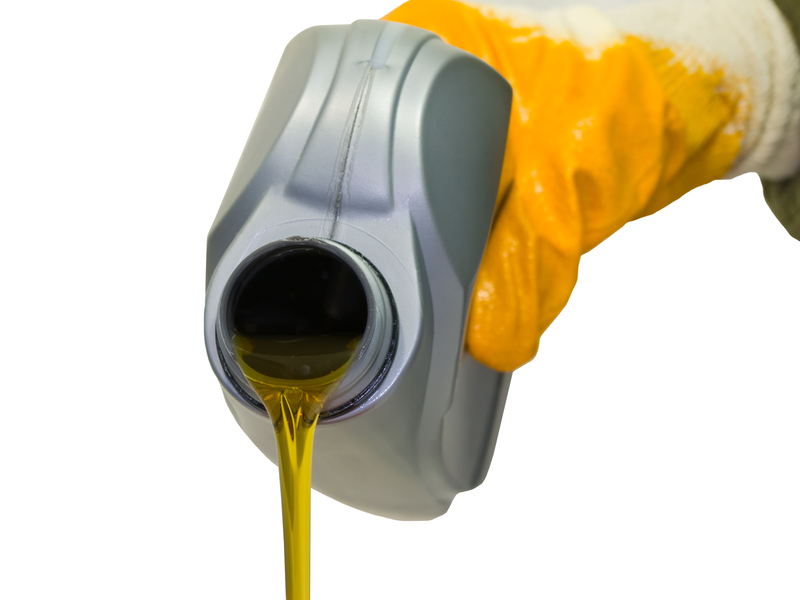Advice on Sorting and Disposing of PPE Waste Sustainably
The global pandemic has made personal protective equipment (PPE) a daily necessity. Masks, gloves, face shields, and gowns have become ubiquitous across health care settings, workplaces, and our homes. However, as the use of PPE surges, so does the challenge of managing the environmental footprint of disposable items. This comprehensive guide offers advice on sorting and disposing of PPE waste sustainably, ensuring safety and environmental responsibility go hand-in-hand.
Understanding PPE and Its Environmental Impact
Personal Protective Equipment waste includes single-use masks, latex and nitrile gloves, protective gowns, shoe covers, and face shields. Most of these items are manufactured using plastics and polymers, which are non-biodegradable and can persist in the environment for years.
Unfortunately, the surge in PPE use has led to increased pollution--on streets, in waterways, and even in wildlife habitats. According to various studies, millions of masks and gloves are disposed of daily across the globe. Sustainable PPE waste disposal is crucial not only to safeguard public health but also to protect our planet.

How to Sort and Dispose of PPE Waste Sustainably
1. Understand PPE Waste Types
- Reusable PPE: Fabric masks, some face shields, and certain gowns designed for multiple uses. These should be properly washed and maintained.
- Single-use PPE: Surgical masks, N95 respirators, disposable gloves, and non-reusable gowns. These items comprise the majority of the PPE waste problem.
Knowing the difference is the first step towards sorting PPE waste efficiently and reducing your environmental footprint.
2. Separate Based on Contamination Level
Not all PPE waste carries the same risk. It's vital to distinguish between potentially infectious and non-infectious PPE.
- Household or Low-risk PPE Waste: Masks and gloves used in daily life without exposure to infectious materials.
- Medical or High-risk PPE Waste: Used in healthcare, laboratories, or by individuals with confirmed infections. These require strict disposal protocols.
Sustainable sorting of PPE waste begins with clearly labeled bins for different risk categories.
3. Best Practices for Sorting PPE Waste
- Designate specific bins for PPE waste at home, in workplaces, and public areas. Use colored bags (often red or yellow) for contaminated PPE, and different colors for low-risk or general waste.
- Never mix PPE waste with recyclable materials or general household trash. This prevents contamination and facilitates safe disposal or recovery.
- Seal used PPE items in a bag before placing them in the dedicated waste bin. This minimizes the risk of accidental contact and spread of pathogens.
Eco-Friendly Disposal Options for PPE Waste
1. Proper Disposal for Households
For households that have used single-use masks and gloves, sustainable disposal means protecting waste handlers while reducing environmental impact. Here's how:
- Place used PPE in a designated waste bin lined with a sturdy plastic bag.
- Tie the bag securely after filling it. Consider double-bagging if you suspect contamination.
- Wash your hands thoroughly before and after handling PPE waste.
- Do not place PPE waste in recycling bins, as it cannot be processed with regular recyclables and may contaminate the recycle stream.
2. Institutional and Medical PPE Waste Disposal
Hospitals, clinics, and other high-risk settings are responsible for the bulk of hazardous PPE waste. Medical-grade PPE waste must be treated as biohazardous.
- Use UN-approved biohazard bags and containers for collection.
- Label all containers clearly with hazard symbols and dates.
- Store PPE waste securely away from general trash and public areas.
- Dispose of via licensed medical waste management companies, who will treat the material (usually through incineration or autoclaving) to neutralize pathogens.
3. Reducing Landfill Burden: Recycling and Recovery
While many single-use PPE items are not directly recyclable by traditional means due to contamination and material composition, innovations are emerging:
- Specialized recycling programs: Some companies, such as TerraCycle, have established programs to collect and recycle PPE like masks and gloves into plastic lumber or paving bricks.
- Waste-to-energy (WTE) solutions: High-temperature incineration can recover energy from PPE waste, reducing the volume headed to landfills while generating electricity.
Always check local regulations and available programs before sending PPE for recycling to ensure safe and legal handling.
Additional Strategies for Sustainable PPE Waste Management
1. Minimize the Use of Disposable PPE
The most effective strategy is reduction at the source. Consider these tips:
- Opt for reusable PPE such as washable cloth masks or face shields wherever appropriate.
- Educate users in schools and workplaces about when single-use PPE is genuinely necessary and when reusable options can suffice.
- Support innovation: Advocate for biodegradable or compostable PPE from manufacturers and suppliers.
2. Promote Community Engagement and Education
- Run awareness campaigns about the environmental impact of PPE waste and sustainable sorting and disposal methods.
- Distribute information on how, where, and why to segregate PPE waste in the community.
3. Innovate with Smart Waste Solutions
- Invest in smart bins with touchless openings and sensors to limit contact and cross-infection.
- Explore PPE collection points in busy areas (e.g., transport hubs, malls) to reduce littering and encourage responsible behavior.
Practical Tips for Sorting and Disposing of PPE Waste Responsibly
For Individuals and Households
- Avoid flushing masks or gloves down the toilet -- this causes blockages and pollutes aquatic environments.
- Carry a personal waste pouch for used PPE when out so you don't litter or contaminate public bins.
- Encourage children and family members to follow PPE waste guidelines for their own safety and community health.
For Businesses and Organizations
- Place clear signage above all PPE-specific waste bins to ensure correct use.
- Train cleaning staff in safe collection and disposal procedures for PPE waste.
- Regularly audit PPE waste streams to identify opportunities for reduction or recycling.
Challenges and Solutions in PPE Waste Disposal
Despite our best efforts, sustainable PPE waste management encounters barriers such as lack of public information, limited local recycling options, and confusion over "what goes where." Here are common challenges with potential solutions:
-
Challenge: Misconceptions about recyclability.
Solution: Offer clear, up-to-date guidance on local PPE recycling or disposal regulations. -
Challenge: Fear of contamination deters proper sorting.
Solution: Promote the importance of hygiene when handling used PPE and provide PPE-specific disposal tools. -
Challenge: Insufficient infrastructure for PPE waste management.
Solution: Community governments and businesses should invest in dedicated collection points and partner with specialized waste management firms.
Emerging Trends in PPE Waste Management
Biodegradable PPE
Research is rapidly advancing on compostable PPE made from plant fibers and other natural materials. Adoption of these alternatives could drastically reduce landfill impact and microplastic pollution.
PPE Upcycling Initiatives
Creative projects worldwide are giving new life to PPE waste, from constructing park benches to manufacturing reusable shopping bags and even building materials for affordable housing.
Legislation and Circular Economy Policies
- Governments in some regions are setting targets for PPE recycling and introducing policies to incorporate single-use PPE into circular economy frameworks. Staying informed about local regulations ensures your practices are both sustainable and compliant.
Frequently Asked Questions About PPE Waste Disposal
Can I recycle disposable masks or gloves in my regular recycling bin?
No. Disposable masks and gloves are typically made from materials not accepted by curbside recycling, and contamination risk further excludes them from standard recycling streams.
What should I do if there aren't any PPE recycling programs in my area?
The safest and most sustainable option is to minimize use, seek out reusable alternatives, and ensure disposable PPE is correctly bagged and sent to landfill, not mixed with recyclables or organic waste. Encourage local authorities to adopt sustainable PPE waste management programs.
Can I compost biodegradable masks and gloves at home?
Only if the manufacturer certifies them as genuinely compostable in home composting systems. Medical or contaminated PPE, even if biodegradable, should not be added to compost to prevent the risk of pathogen spread.

Conclusion: Building a Sustainable Future with Responsible PPE Waste Disposal
As individuals, organizations, and societies grapple with the consequences of increased PPE use, it is essential to integrate advice on sorting and disposing of PPE waste sustainably into everyday life. By sorting waste at the source, following safe and environmentally sound disposal practices, reducing reliance on single-use items, and supporting emerging recycling innovations, we can protect both human health and our planet.
Make sustainable PPE waste management a part of your daily routine--your actions matter!